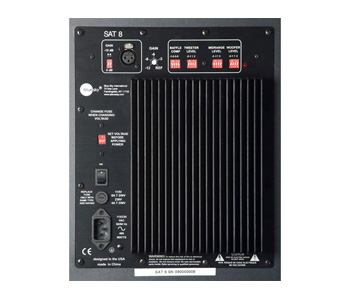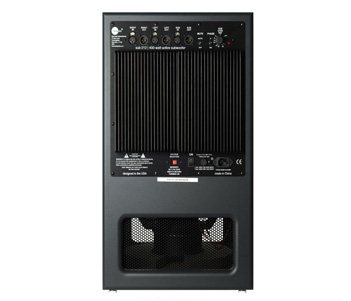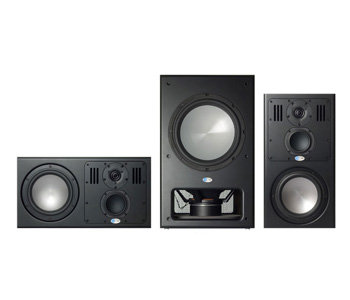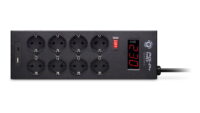

SAT 8
Blue Sky’s SAT 8 is a three way, tri-amplified, 300-Watt, compact mid-field monitor which features an 8” high excursion hemispherical woofer, an ultra low distortion 4” hemispherical midrange driver, and a 1” dual ring radiator tweeter with integral waveguide, for superior off-axis response. To reduce destructive cabinet diffraction reflections, Blue Sky has developed and incorporated into the baffle, the proprietary “Multi-Aperture Acoustic Diffraction Absorber”, which helps to maintain smooth on and off axis frequency response throughout the critical MF and HF frequency range, without the need for a large wave-guide or horn.
The SAT 8 is powered by a dedicated low distortion 100-Watt amplifier for the 8” woofer, a low distortion 100-Watt amplifier for the midrange, and a low distortion 100-Watt amplifier for the tweeter. The SAT 8 effortlessly delivers clean and accurate sound with a frequency response of 80Hz to 30kHz +/-3.0dB (200Hz to 15kHz +/-1.5dB), for full compatibility with Blue Sky’s SUB 15 Universal, SUB 212, SUB 12 and BMC (Bass Management Controller). The rear panel also has controls for “full space” (placement in a room) or “half space” (mounted in a baffle wall) operation, along with individual HF, MF and LF level trims, as well as controls for variable gain settings.
SUB 212
Blue Sky’s SUB 212 is a sealed box, dual 12”, push-pull, 400-Watt subwoofer. It features an anechoic frequency response of 25Hz to 200Hz, +/-3dB. In addition, the SUB 212 also has built-in 2.1 bass management electronics with both a 4th order 80Hz Linkwitz-Riley low-pass filter and a 2nd order 80Hz high-pass filter that is perfectly matched to the response of the SAT 8 (the SUB 212 is also compatible with the SAT 12, SAT 6.5 and SAT 5).
The SUB 212’s unique “push-pull” configuration is designed not only to increase output, but also to reduce distortion. A push-pull subwoofer uses two drivers: one mounted facing forward, the second mounted backward with the magnet facing out. Utilizing two drivers doubles the maximum output, while the push pull configuration reduces even harmonic distortion. Typically, in a more conventional design, at high output levels, second harmonic distortion dominates the distortion spectrum of most subwoofer drivers and is caused by asymmetric operation of the suspension and magnetic structure. In simple terms; the output of the driver is slightly different when the cone is moving away from the magnet, as compared to when it is moving toward its magnet.
Push-pull operation reduces this even harmonic distortion in a clever application of physics. As mentioned before, push-pull uses two drivers, one reversed from the other. The bottom driver has its magnet facing out of the box and is driven electrically out–of–phase from the front driver, which keeps both drivers acoustically in phase. However, when the front driver’s cone is moving away from its magnet, the bottom driver’s (reversed) cone is moving towards its magnet. This puts the even harmonic distortion components of the bottom driver out-of-phase with the front driver. When you combined the outputs of both drivers, the even harmonic distortion of both drivers cancels, reducing the overall distortion of the subwoofer.
IDR 62.000.000 (ex-demo)





